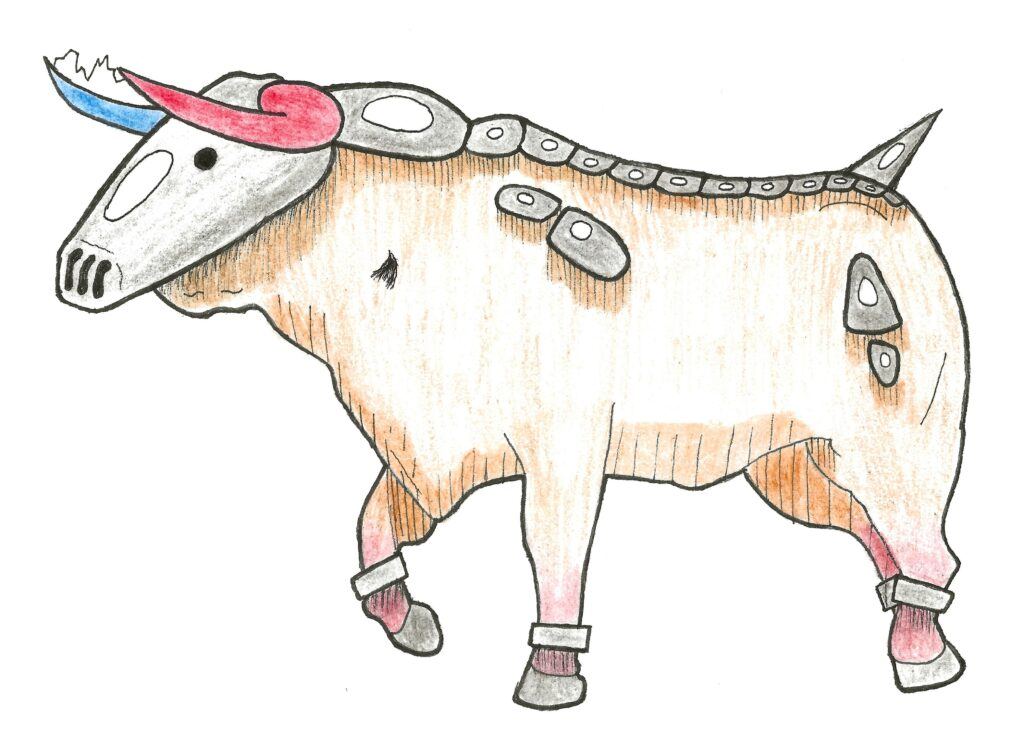
World: Midgard
Diet: Grass, minerals
Height: 5’11” at the shoulders
Lifespan: 120 years
Habitat: Prarie and savannah
Activity Cycle: Cathemeral
Once in a while, amidst herds of wild cattle in the fields there is seen a glint of steel. Aurochs, bison, or even buffalo in the warmer savannahs, all may play host to a magnetaur. These odd creatures are all bulls, all male, and with their powers they dominate mating rights within the herd, with a small fraction of their calves being born as more magnetaurs. They grow slower than other calves, and are vulnerable while they gather the iron necessary to grow their armor, but once fully grown there are few creatures who can match them.
The origins of this species are unknown, but it is widely believed that an ancient civilization altered them from domesticated bulls to battle in city streets and break down light barricades. With the iron that plates their skulls and reinforces their spines, they can certainly charge through walls whether they were made for it or not. That lies secondary to their unusual ability to channel electricity through their plating, electrocuting any being which touches their metallic parts and running an arc between their horns. This also forms a magnetic field that draws in ferrous material, including of course steel weapons and armor.
Only when truly threatened does a magnetaur unleash its secret weapon. While running a spark between its horns, the magnetaur breathes out a noxious mix of gasses. These are ignited to create a stream of fire, deadly to nearly all creatures. This ability is usually held back due to its capacity for destruction, lighting fires that risk the entire herd. Even a magnetaur has only limited resistance to flame, and several of these rare creatures have died in wildfires of their own ignition.
In some minotaur and western elven nations, bull-dancing, where an acrobat leaps over a charging bull, is a popular performance, both ritual and entertainment. Only the greatest of bull-dancers are permitted to work with magnetaurs, and they are sometimes even kept as holy animals in the temples where their performances are held.
